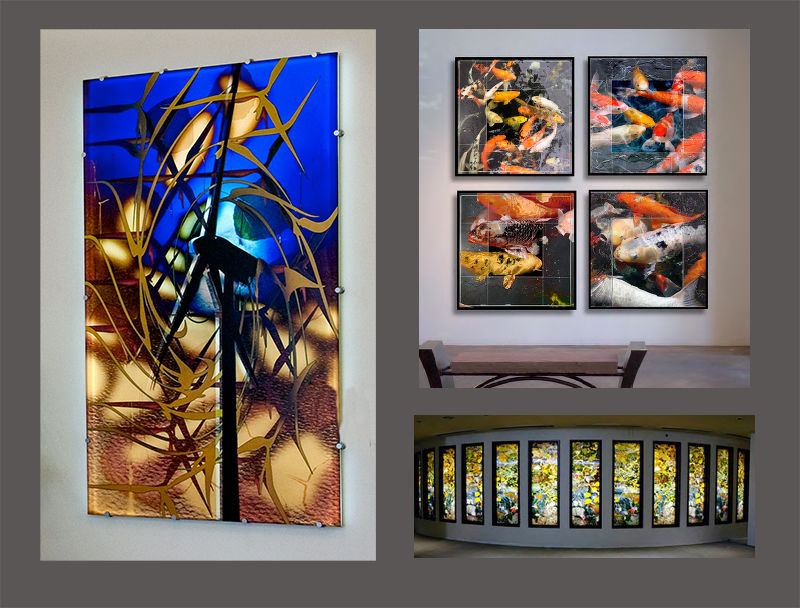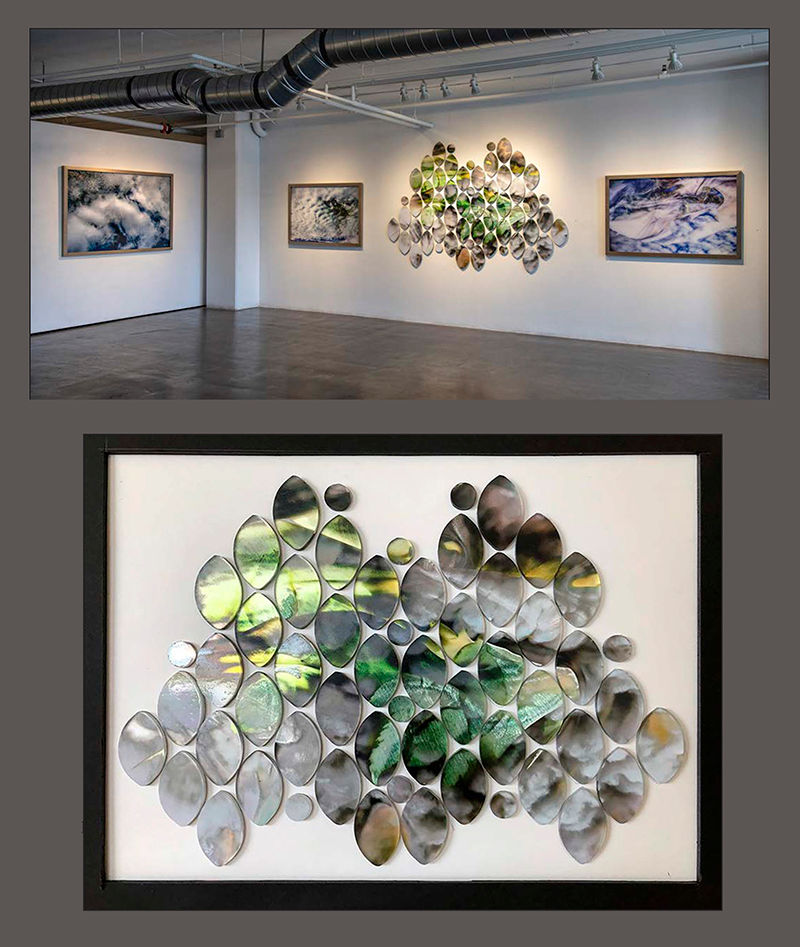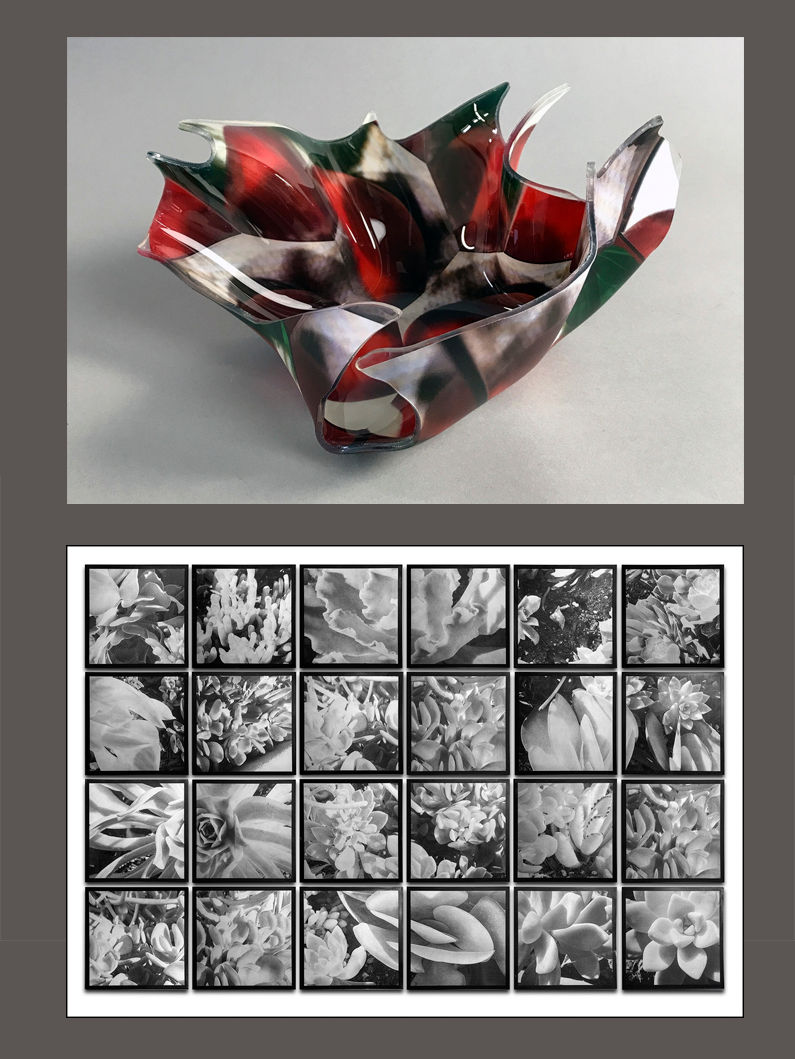Bonny Lhotka, artista plástica y creadora de impresiones, habla con Roland DG sobre cómo triunfar en el mundo del arte.
Desarrollar un negocio de arte exitoso es difícil. Hay mucha competencia en galerías, eventos, la Internet y los medios. En el altamente competitivo mercado de las bellas artes y la fotografía, los artistas necesitan ser mucho más listos para encontrar nichos de interés y fuentes de ingresos para sus trabajos. Ellos necesitan reconocer oportunidades y aprovecharlas apenas las encuentren.
Para triunfar, los artistas no solo tienen que perfeccionar sus habilidades sino también mantenerse activos en la comunidad artística, asistir a shows en galerías, eventos, y mantener relaciones en la industria. Sin embargo, hay rutas aún más prácticas que los artistas y fotógrafos pueden tomar, e inversiones que pueden hacer para desarrollar sus negocios. Luego de hablar con Bonny Lhotka, instructora de Roland DG Imaginarium Artcademy y tremendamente exitosa artista, podemos compartir algunas acciones específicas que los artistas de bellas artes pueden tomar para tener más éxito.
1. Preséntese como Profesional.
Aunque pocas veces es cierto, los artistas a menudo son percibidos como “poco confiables”. No caiga en la trampa de mostrarse como un “artista excéntrico” e imitar comportamientos que ya no existen en el multimillonario mundo del arte. En una era donde las primeras impresiones valen mucho, usted tiene que aplicar las mismas reglas que la gente de negocios de alto nivel aplica en sus interacciones con clientes y contactos.

Está bien ser uno mismo, pero usted tiene que presentarse como profesional en el mundo de los negocios.
No sea informal.
Considere sus reuniones con clientes, dueños de galerías y socios importantes como cualquier otro profesional serio lo haría. Vístase elegantemente y comunique sus ideas con conocimiento y claridad. No sea informal al vestir, hablar ni al presentar sus obras. Sea siempre puntual.
Comuníquese hábilmente.
Ser un artista no solo es cuestión de tener talento artístico. A menudo es igual de importante tener destrezas interpersonales para que usted pueda hablar con la gente sobre su trabajo, así como crear para ellos como artista. Use su sitio Web, muestras de trabajos y habilidades de presentación para hablar sobre sus planes y estrategias artísticas.
2. Esté Siempre Preparado.
Organícese con Muestras y Tarjetas de Presentación.
Usted también debe estar bien preparado con tarjetas de presentación, muestras y métodos digitales para compartir sus trabajos ya sea vía una laptop o tablet. Los dueños de galerías, comerciantes y consultores de arte quieren tratar con gente talentosa, erudita y preparada. Nadie quiere trabajar con gente mal preparada que dé la impresión de ser poco confiable.
Desarrolle su Contenido Digital.
Es también extremadamente importante presentar sus obras a través de la Internet. Además de su propio sitio Web, Bonny ha acumulado una gran colección de videos, artículos e interacciones vía Internet con tiendas, galerías y publicaciones en línea. Esto le da a Bonny muchas opciones al mostrar sus trabajos. Al crear su sitio Web, sea profesional y exclusivo con su contenido. ¡No incluya blogs personales o fotos de sus mascotas! Eso está bien para las redes sociales, pero es importante que su sitio Web profesional mantenga precisamente eso: profesionalismo. Enfóquese en lo que quiera decir sobre su arte y lo que desee vender.

©Bonny Lhotka. Foto reproducida con su autorización.
El sitio Web de Bonny Lhotka, uno de sus muchos videos de YouTube, y su tienda en línea donde sus trabajos están a la venta. Ella tiene múltiples recursos en línea para presentar sus obras, habilidades y métodos.
Cree una Lista de Clientes.
A través de sus interacciones usted debe crear una lista de contactos. Es importante mantener un registro de clientes potenciales y oportunidades, independientemente de las galerías en las que sus obras ya estén siendo exhibidas. Sin embargo, es importante saber que las galerías no quieren que los artistas que representan vayan directamente a otras galerías; siendo esencial respetar las relaciones con las galerías y no buscar directamente a otras.
3. Explore Oportunidades Comerciales Diferentes.
Producir trabajos que encajen en una única visión creativa no es algo que le sirva a Bonny ni a muchos otros exitosos artistas plásticos, que no consideran las oportunidades comerciales como algo que “perjudique su visión artística”. La idea de que usted de algún modo corromperá su integridad artística al tomar decisiones comerciales no solo es dañina para su negocio sino también falsa. A través de los siglos, desde el David de Miguel Ángel que fue encargado por el gobierno de Florencia hasta los muchos Rothko que adornan las paredes de algunas de las más grandes corporaciones de Wall Street, muchas de las más grandes obras de arte fueron creadas como encargos o proyectos comerciales.
Cree Oportunidades a través de Alianzas Empresariales.
Bonny nos describió cuántos de sus más grandes éxitos en el arte fueron resultado de asociaciones con empresas y organizaciones. En estas asociaciones ella pudo ser capaz de hablar con los clientes sobre sus marcas, antecedentes comerciales y objetivos empresariales usando sus materiales de relaciones públicas, logotipos, recursos fotográficos y demás materiales para desarrollar una visión artística informada y relevante de sus empresas, manteniendo a la vez su propio estilo, visión artística y sutileza técnica.

©Bonny Lhotka. Foto reproducida con su autorización.
Diversos proyectos de Bonny Lhotka por encargo que agregan significado y elegancia a espacios empresariales. Luego de hablar con el personal de las empresas e investigar los recursos de éstas, Bonny capturó con su arte el espíritu y la emoción de lo que hacen las empresas.
Sea Flexible y Abierto.
Si tiene la suerte de obtener un encargo de una corporación para crear arte, tómese su tiempo para hablar con la gente y ofrecerle lo que quiere, en lugar de tratar de usar la oportunidad para hacer lo que usted desee como si fuera un artista sin compromisos y solo interesado en su propia estética. Para ganar dinero en el arte, los artistas y fotógrafos necesitan ser flexibles y estar dispuestos a hacer lo necesario para triunfar.
Logre Exhibir en una Galería.
Del dicho al hecho hay mucho trecho, pero uno de los mayores objetivos de todo artista, además de obtener clientes y trabajos por encargo, debe ser que sus obras se exhiban en al menos una galería. Esto es el equivalente de una página Web propia: un sitio al que usted puede enviar gente para mostrarle sus trabajos en una forma física. Es algo a menudo en contra de la naturaleza de los artistas, pero los que deseen triunfar deben ser activos y no esperar a que las galerías se pongan en contacto con ellos. Usted tiene que ser tanto una especie de “buscavidas empresarial” como una persona creativa y talentosa. Visite galerías, hable con los dueños sobre su trabajo, y esté listo con su información de contacto. Tenga la habilidad de presentar su trabajo a pedido, con muestras digitales o físicas.
4. Conozca su Audiencia y Adáptese Artísticamente.
Puede no ser algo que se deba decir entre los creativos que quieren ser vistos como espontáneos, pero los artistas deben tener un plan y un objetivo, en lugar de ir de un medio al otro y de un tema a otro por capricho. En estos tiempos, usted como artista debe ser estratégico respecto a su uso de materiales, saber qué temas desea pintar, imprimir o fotografiar, y tener un enfoque milimétrico sobre a quiénes usted desea atraer con su arte y lo que busca lograr.
Sea Flexible y Busque Nuevos Mercados.
Ser un artista especializado no significa “limitarse”. Los artistas y fotógrafos deben estar constantemente buscando nuevas herramientas y técnicas para crear arte, prestando atención a nuevos medios, tecnologías y mercados. Los artistas deben también estar atentos ante una nueva generación de millenials mayores que coleccionan y crean arte que refleja la naturaleza visual de su generación. Para cautivar a la generación de millenials mayores que creció en una era digital pero recuerda con cariño la calidad táctil de las pinturas en óleo, Bonny produce obras que reflejan una visión “de alto brillo” de su mundo digital y que a la vez poseen texturas físicas. Ella logra esta dualidad con las impresoras de cama plana VersaUV de Roland DG. Al usar estas impresoras, Bonny es capaz de juntar dichos puntos de vista generacionales a través de la impresión UV.

©Bonny Lhotka. Foto reproducida con su autorización.
La exhibición final de 152 cm x 243 cm de Bonny (arriba) con un aspecto reflejado y brillante mostrado en la Walker Fine Art Gallery. Además, la muestra de dicha obra de 33 cm x 33 cm (abajo) que ella creó con la VersaUV LEF-300 para su clientela.
Explore Arte más allá de Plumas y Pinceles.
Aunque es importante reconocer sus raíces como artista, es también importante ver más allá de plumas y pinceles en la búsqueda de formas para producir, presentar y reproducir su trabajo. Como artista y creadora de impresiones, Bonny ha logrado nuevos procesos con diversas tecnologías de impresión. Ella usa una combinación de dispositivos digitales, incluyendo las impresoras UV de cama plana Roland DG como auténticas “herramientas artísticas” para crear sus características caustigrams, litofanías, impresiones intaglio, fotografía con tinta blanca e impresiones UV de productos moldeados por desprendimiento.

©Bonny Lhotka. Foto reproducida con su autorización.
Los ejemplos del trabajo de Bonny Lhotka creado con las impresoras UV de cama plana LEF de Roland DG (arriba). Arte escultural de molde por desprendimiento (abajo) creado por Bonny usando su propio proceso caustigram.
Uso de Herramientas de Impresión para Muestras de Trabajo y Artículos de Reventa.
Usar impresoras de inyección de tinta para reproducir trabajos sobre lienzos o impresoras UV de cama plana para crear versiones a pequeña escala de su arte y mostrarlo a sus clientes o asesores es un excelente recurso. Usted puede también usar las impresoras UV para aplicar su arte a productos o mercadería, expandiéndose hacia nuevas ideas en el mundo de la personalización de productos. Actualmente la gente busca productos únicos y significativos. Usted puede explorar este rentable recurso artístico en tiendas en línea como Etsy, o crear sus propias reproducciones de arte para eventos de galerías.
Piense a lo Grande.
Usted debe pensar en llevar su arte más allá de los confines del espacio de una galería. Programas como el One Percent for the Arts son más populares que nunca y presentan oportunidades para artistas en espacios públicos. Los artistas necesitan planear hacer su arte más grande y atractivo que nunca. Para los artistas plásticos, fotógrafos y creadores de impresiones tradicionales, pintar a lo grande o imprimir arte con impresoras de formato grande para su aplicación en dichos espacios públicos puede ser muy rentable y provechoso: su arte será visto por mucha gente, y la exposición será inmensa.

Foto ©Kara Muse
Un mural popular del artista Ben Angotti que adorna una calle de Brooklyn en New York— visto y apreciado por una masiva audiencia todos los días.
- Además de tener su trabajo exhibido en el Smithsonian American Art Museum y muchas otras galerías en los Estados Unidos, Bonny Lhotka exhibe sus obras a nivel mundial y aparece en muchos libros y artículos sobre medios experimentales. Vea más de sus exclusivos métodos de impresión y obras de arte que incluyen piezas producidas con impresoras Roland DG en su sitio Web. Este mes de Julio, Bonny dirigirá nuestro Taller Anual de Roland DG Imaginarium Artcademy que muestra procesos experimentales de impresión con impresoras UV de cama plana. Vuelva a visitar nuestro blog Roland DG News Views & How To para más inspiraciones y obras de arte creadas con la tecnología UV, y vea cómo usted puede crear un exitoso negocio artístico con la tecnología Roland DG.


